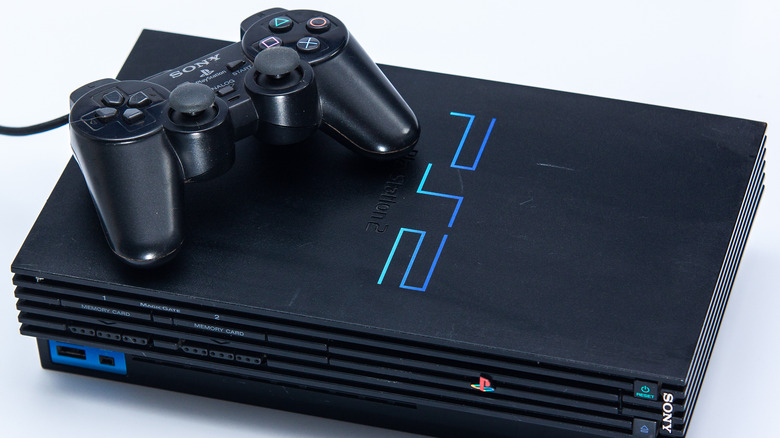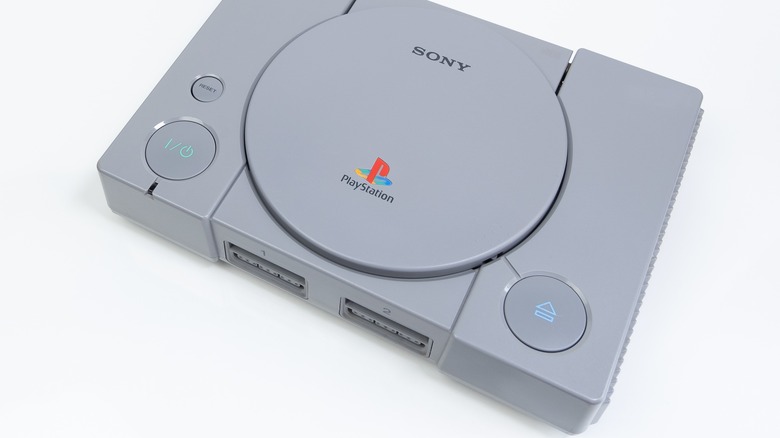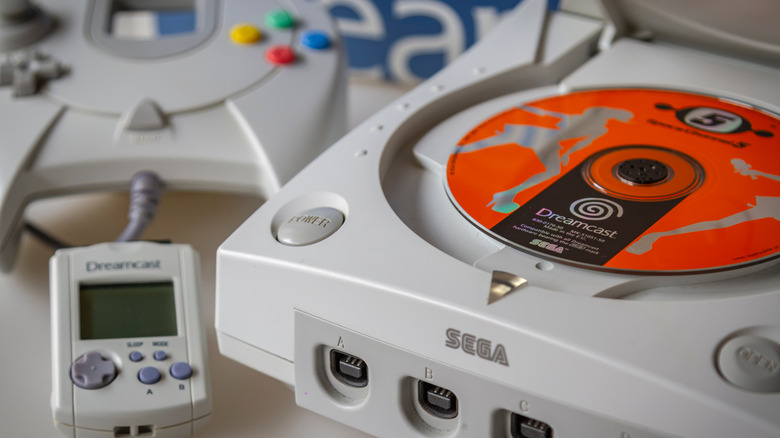How Sony Outclassed Sega In The Console Wars
The mid-1990s was an interesting time in video game history, with 3D visuals and gameplay coming to the fore via titles like "Descent" and "Quake," and then going even more mainstream — or at least as mainstream as video games could be considered at the time — thanks to home consoles from Nintendo, Sega, and Sony that tried to capitalize on the technology. 1994 in particular was an exciting time as that winter saw the Japanese release of both the Sega Saturn and the Sony PlayStation, which were followed by the Nintendo 64 in 1996.
And that's to say nothing of the plethora of other consoles that were also still on the market. Atari's Jaguar in 1993, Sega's 32X in 1994, Nintendo's Virtual Boy in 1995, Panasonic's R.E.A.L 3DO in 1993 — it was overwhelming, to put it mildly. There were too many choices, and if you picked the wrong hardware you'd essentially find yourself saddled with an expensive paperweight.
The three major gaming companies tried to stand out by pushing "true" 3D games. But even so, the waters were so muddied with consoles it was only natural for at least one of them to fall behind.
The beginning of the end
Things started to go wrong for Sega pretty early on as the Saturn's November 1994 launch in Japan put it in direct sales competition with Sony's PlayStation, which was set to release the very next month. The excitement for Sony's first-ever video game console outweighed the interest in Sega's followup to its Genesis-Sega CD-32X hybrid pretty much everywhere except Japan, too. Sega tried to beat Sony to the punch by changing the US release date to May 1995, about four months before the PlayStation's launch, but that only made things worse.
The Saturn had a smaller launch library with six games versus the PlayStation's eight, which was partially due to the release date bump as many of its planned third-party launch titles had to stick with the original release projection. The Saturn's library was no slouch once it got its footing, with several well-regarded games to its name like the Panzer Dragoon series and Virtua Fighter, but the PlayStation had more. Lots more. Then there's the matter of cost, which put the Saturn about $100 (roughly about $185 more in 2022 money) higher than the PlayStation. So the choice was, on a surface level, at least, to pay more for less, or to pay less for more.
Then there's the matter of the hardware itself. Sega wanted the Saturn to be able to compete with the PlayStation's 3D prowess, but it was originally intended to be a sprite-based 2D machine. The internal tech was changed around a bit to give it more 3D power, but the result was a console that was more difficult to create games for, especially in 3D.
Dreamcast lost to PlayStation
Sega persevered through the Saturn's rough patch, but it was on its back foot. The company needed something big to recoup its losses and put itself back on top — or, at least, closer to the top. And so it released the Dreamcast in Japan in November 1998, then in the US the following year in September 1999.
It was an incredibly advanced console for the time, offering a built-in 56k modem and four controller ports, plus it was much better at supporting 3D games than the Saturn. Unfortunately, the Dreamcast was also more expensive to produce, so Sega had to sell each unit at a loss. It still managed to perform fairly well against the PlayStation and Nintendo 64, but then the PlayStation 2 happened in March 2000 (October in the US).
Sony's PlayStation 2, which had comparable graphical capabilities, could capitalize on the PlayStation's popularity, had access to popular licenses like the "Final Fantasy" series, and had a built-in DVD player, which was a first for a home console at the time, all but buried the Dreamcast. Many potential buyers who hadn't purchased a Dreamcast yet decided to wait for the PlayStation, even with Sony's inventory issues during the launch period.
After that, there was no way for Sega to recover — at least not as part of the console market. In January 2001 the President of Sega of America at the time, Peter Moore, announced that the company would cease its role as a console manufacturer and instead focus on being a third-party game developer for other platforms. Despite its failings there's still a lot of love for the Dreamcast, including "new" game releases and modifications, but both it and Sega were dealt a few too many bad hands.


